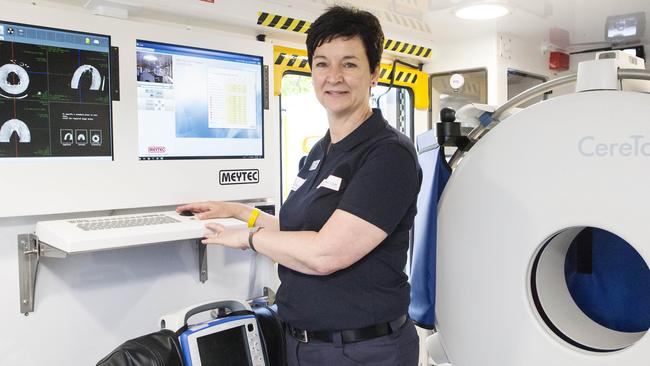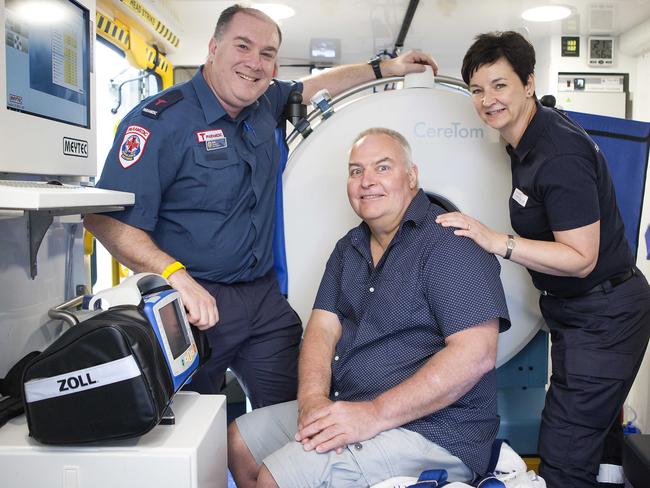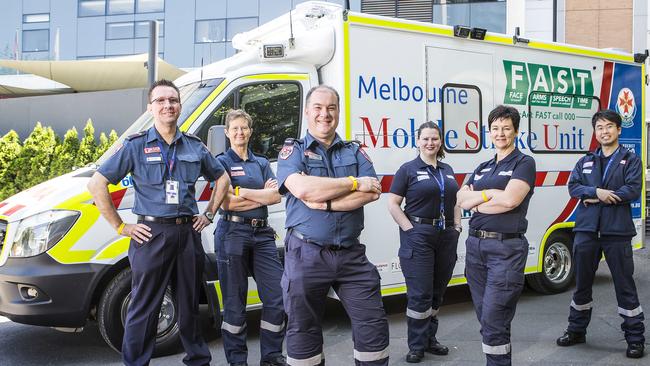Mobile CAT scanner to change Victorian stroke care
AUSTRALIA’S first specialist stroke ambulance joins the fleet this month and it will see stroke patients treated up to an hour earlier.

VIC News
Don't miss out on the headlines from VIC News. Followed categories will be added to My News.
AUSTRALIA’S first specialist stroke ambulance will join the fleet this month.
The $7.5 million trial will see stroke patients have a brain scan in their driveway, with the aim of getting them access to lifesaving clot-busting drugs up to an hour earlier.
The purpose-built 5.3 tonne ambulance — with a slightly longer wheelbase than a standard stretch ambulance — will hit the road on November 20.
Premier Daniel Andrews and Minister for Ambulance Services Jill Hennessy will today launch the trial that will initially service suburbs within a 20km radius of Royal Melbourne Hospital.

The ambulance will have a mobile CAT scanner on board, about the size of a washing machine, for the brain scan needed to diagnose the type of stroke and allow time-critical thombolysis treatment to begin within the crucial four hours of the event.
Joining the two paramedics on board will be a radiographer and stroke nurse, with a neurologist on-call at the RMH to analyse scans in real-time and advice on immediate treatment before reaching the emergency department.
The project is a partnership between the Royal Melbourne Hospital, Florey Institute of
Neuroscience and Mental Health, Ambulance Victoria, State Government and Stroke Foundation.

It is expected the ambulance will treat up to 3000 Victorians each year when fully operational.
RMH’s director of neurology Professor Stephen Davis said given that millions of brain cells died every minute after a stroke, every minute quicker you could restore blood supply to the brain increased the chance of a better recovery.
“When time is brain, this specially equipped ambulance will mean stroke patients will have the specialist treatments they need much sooner,” Prof Davis said.
Ms Hennessy said the stroke ambulance would give patient the best chance of survival and recovery, and was part of the government’s $500 million plan to improve ambulance response times.


